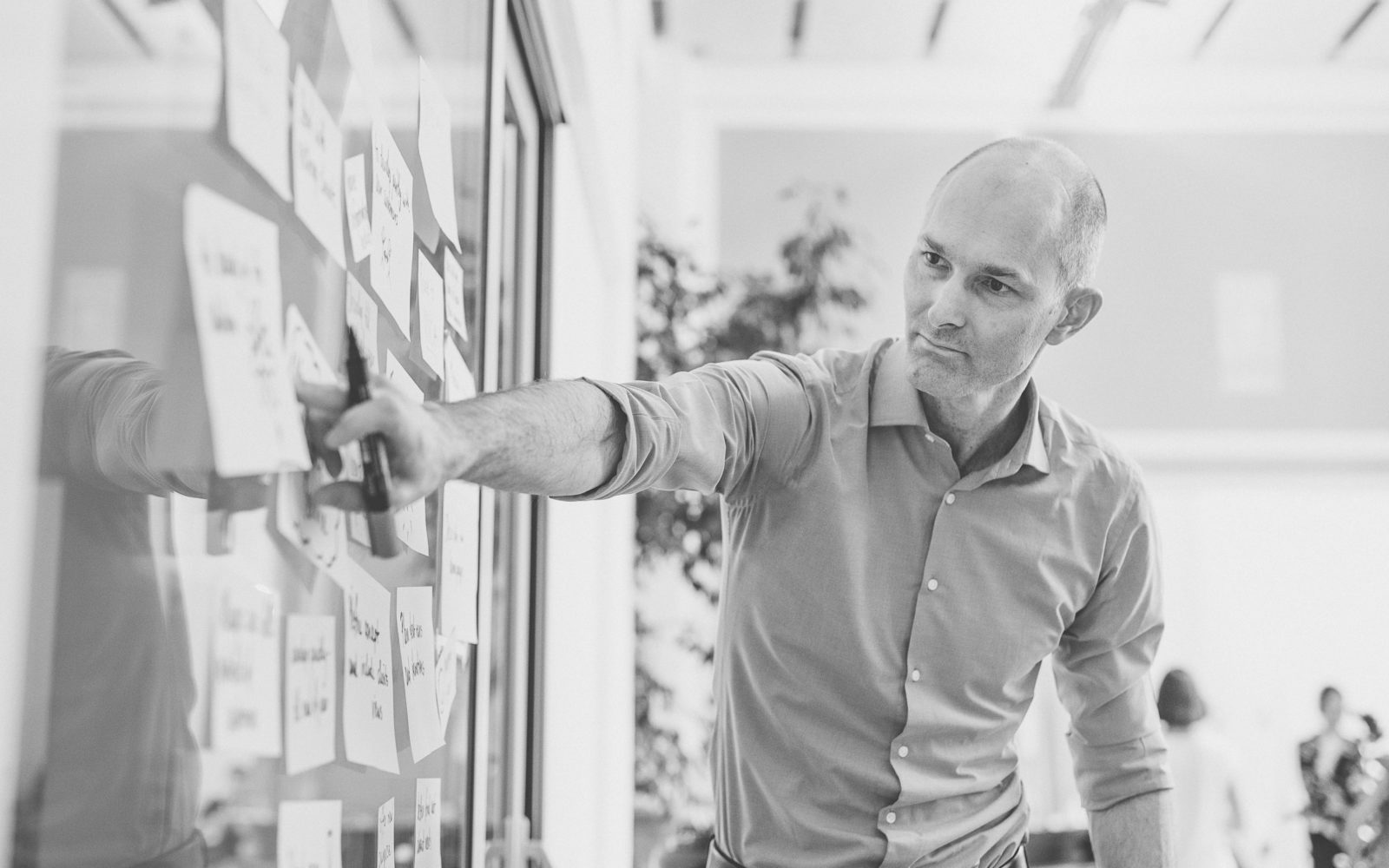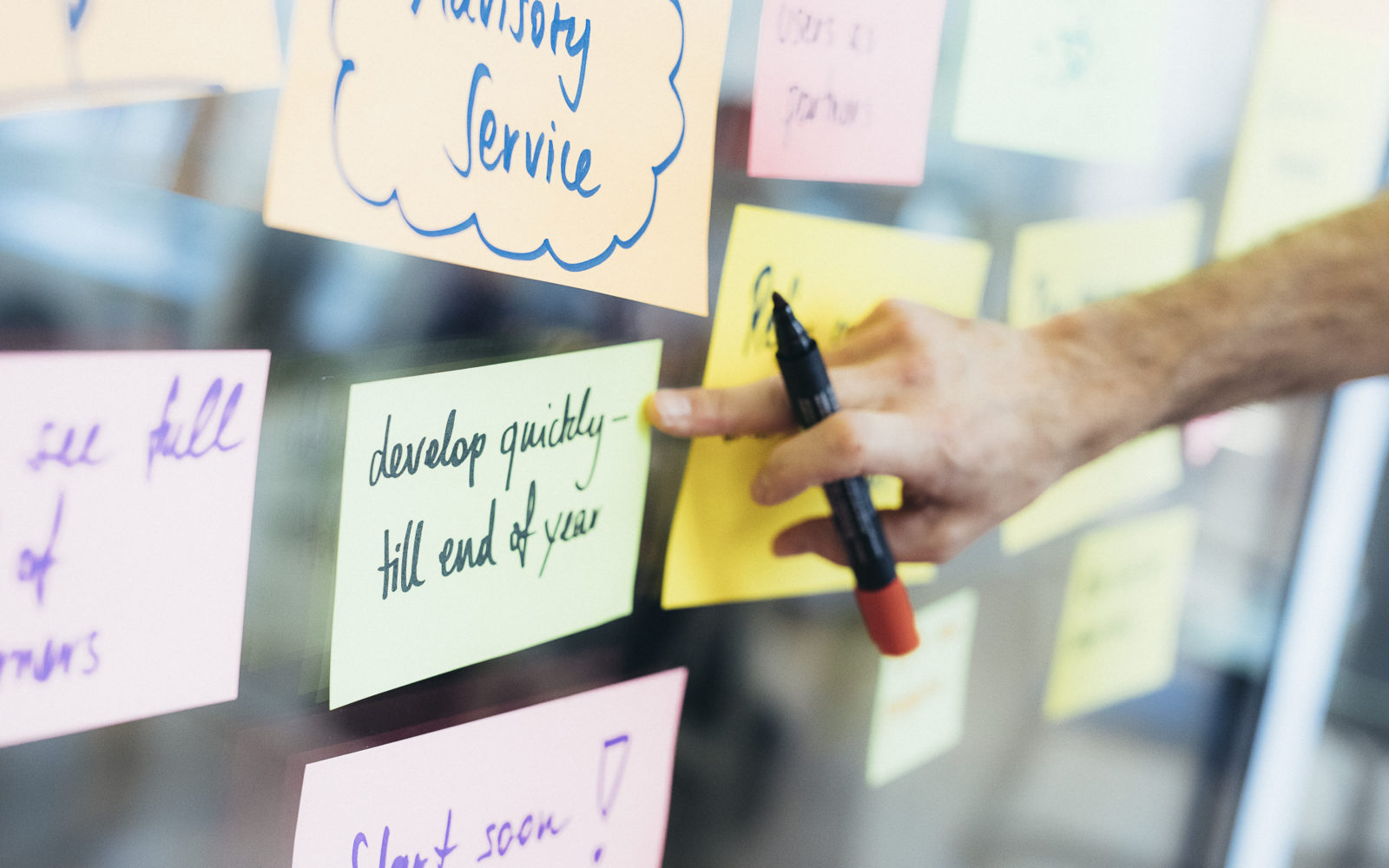Design Thinking
Innovation occurs at the interface between technological feasibility, economic profitability and human desirability. Design Thinking starts with human beings and, therefore, with concrete needs of users. Based in various disciplines and influences it is a simultaneously structured and creative approach to develop user-oriented solutions. A multi-disciplinary team uses a flexible workspace and goes through an open process, masters complex challenges and creates new ideas. A specific mind-set is needed to apply Design Thinking. Particpants and organisations require fault tolerance, the courage to think differently, and the flexibility to try something new. It strengthens internal cooperation and facilitates the development of a more agile corporate culture. Design Thinking is a useful approach to sucessfully meet the complex and dynamic challenges of our time, particularly those offered in an increasingly digitised environment.


Process
The Design Thinking process is an iterative sequence of phases. It begins with understanding (1) the task or challenge. The team examines the topic from different perspectives, discusses assumptions and expert opinions, and creates a joint platform for all further steps. Tools used in this phase are typically user journeys and stakeholder maps. The second phase is observation (2). The team develops empathy for the realities and problems of real users. Usually, this is achieved through interviews, observation, and immersion into their user’s world. The information gathered is summarised and themed. Often this portion of the process yields surprising insights. The third phase is refinement of a specific point of view (3). This allows the team to focus on a solution for a specific need of their users. Methods such as story telling and personas, a fictional figure based on insights of the observation phase, are created and applied. The fourth phase is idea generation (4). Using many creative techniques the team will come up with as many ideas as possible. The design team decides on one inspiring idea with which to continue. The fifth phase is hands-on and an early prototype (5) is built. Prototypes can have different forms: paper, modeling clay, role-playing, or Lego-systems. Prototypes ensure the idea is concrete and capable of providing a real testing experience for users. Product testing (6) is the final phase. Users interact with the prototype and provide feedback on critical functionality. As the team learns from the feedback multiple iterations of the product take shape over time. At any time the team can go back to a previous phase and re-check assumptions, re-think their point of view, or create additional ideas.
Offer
2Intro
Short and practical hands-on introduction to Design Thinking. Workshop participants get first hand experience with design thinking methodology and learn key concepts, examples and application.
Learn more4Training
Experience the whole Design Thinking process through innovative training programs (2 Days).
Learn more5Fast Forward
Development of solution oriented approaches for concrete challenges (2 Days).
Learn more6Sprint
Solution development for specific organisational challenges using SPRINT method (5 days).
Learn more